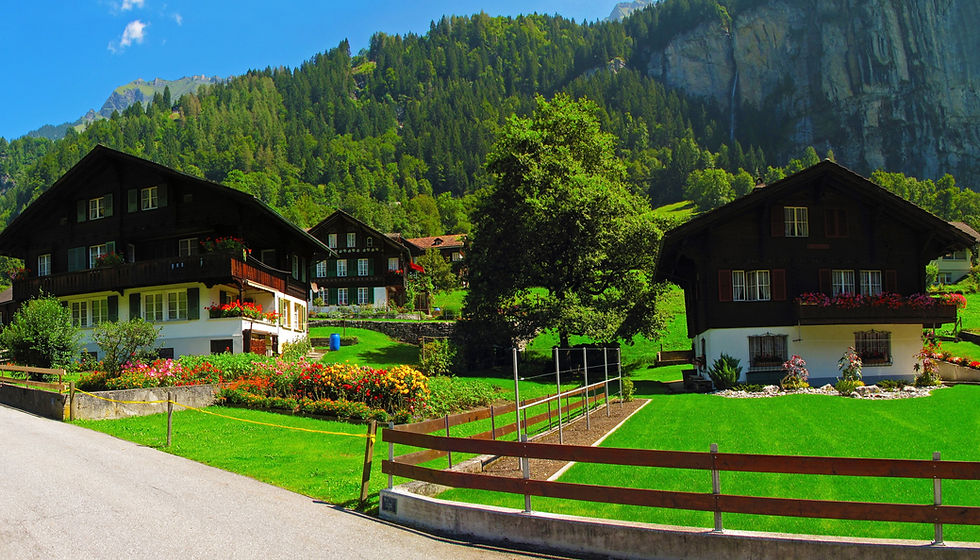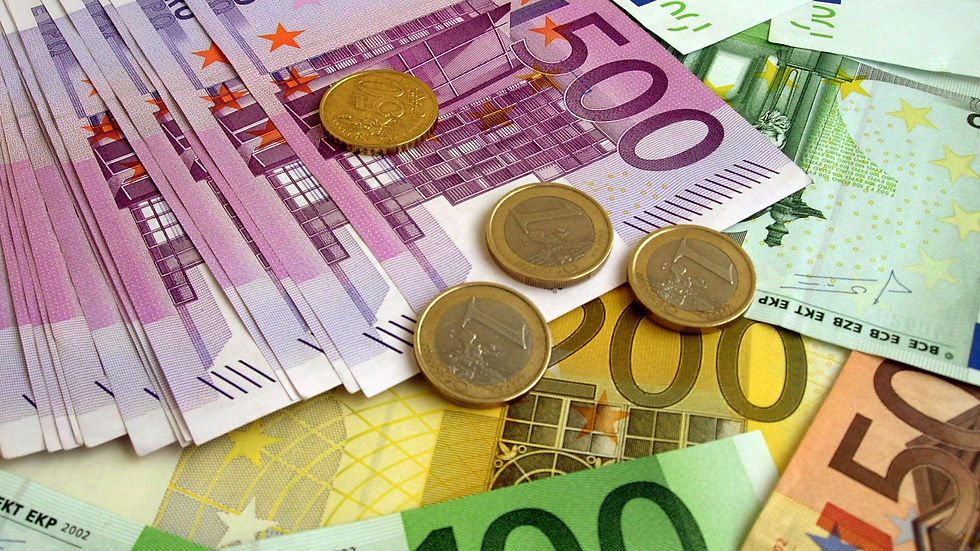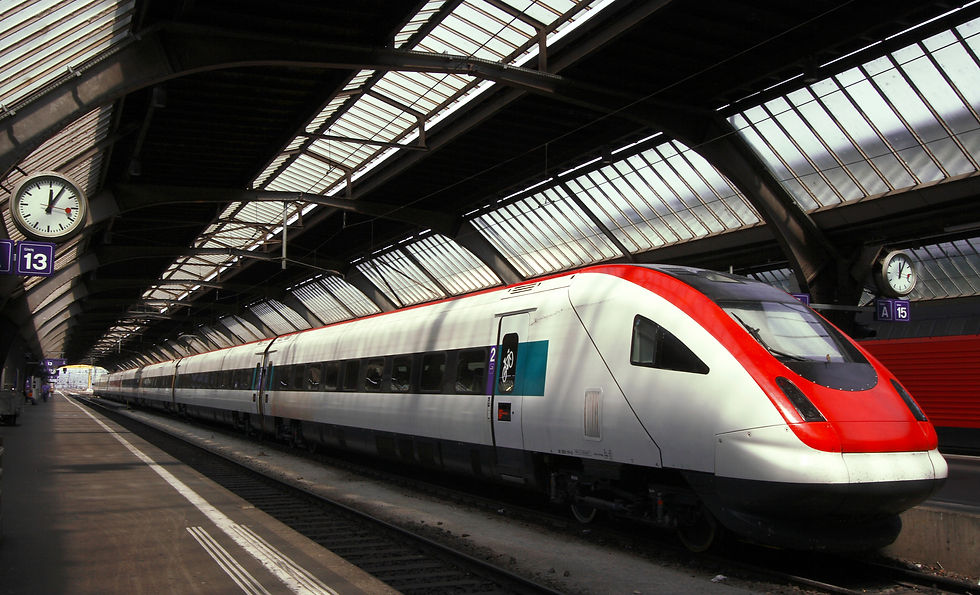Traveling to Europe on a Budget
- Chase Dekker
- Apr 19, 2017
- 6 min read
Updated: Apr 18, 2019

You don't have to know much about Europe to know it can be expensive. Whether you are thinking about traveling into the northern Scandinavian countries or down along the Mediterranean, a trip to Europe can add up…fast. However, by heading overseas during quieter times of the year and following some money-saving tips, it is possible to explore the culturally diverse continent without making your credit card scream.
Below, you will find some of the things I look for when traveling to Europe and how I have learned to travel there without spending too much. Unlike a lot of other travelers who go completely “bare-bone” I like to go with a little added comfort. By that, I mean I like to stay at hotels where I have my own private room instead of staying at a hostel. So this write-up is going to be best for those that want to spend some money, just not A LOT.
Use a Budget Airline

Budget airlines are becoming an increasingly popular mode of transportation when traveling the world. If traveling from North America, there are a variety of budget airlines that will transport you to Europe, although some of them are seasonal. Check out any US International Airport Wikipedia page (such as San Francisco International Airport) and head down to Airlines and Destinations. This will give you a comprehensive list what airlines fly out of that airport, and if it's seasonal. Some budget airlines that fly internationally include: Norwegian Air, WestJet, and EuroWings. These airlines will take you from a good selection of North American cities to multiple European cities for a fraction of what most airlines charge. While you most likely have to stop in their hub cities, they offer a large array of flights connecting to most European cities. While these airlines do not offer a lot of thrills, the cost more than makes up for what they do not have.
Once in Europe, there are plenty of budget airline companies to get around such as easyJet, Ryanair, and Vueling. With these airlines, you can expect to find flights starting at $40 for a flight from Paris to Rome. The one thing to pay attention to is the fine print. Almost all of these airlines will make you pay for checked bags and larger carry-ons, as well as food and entertainment. If you go in prepared, you won’t find any problems. I was skeptical at first when choosing to use any of these airlines, but after multiple experiences I can safely say this is a great option if looking for affordable travel.
Travel During the Shoulder Seasons

You’ve probably heard this tip a thousand times before, but it holds true over and over again. The majority of tourists visit Europe between late May and early September. This means the flights are bound to be more expensive, hotels will fill up faster while having steeper rates, and not to mention it is the hottest time of year. If you can, visiting mainland Europe between April-May and September-October will yield smaller crowds, more pleasurable weather, and reasonable prices. If you choose to travel during this time of year, it is better to work your way north during spring and work your way south during fall. For example, if visiting in April, starting your journey south will provide more sun and warmer weather and then you can chase the sun as the days get longer and the north heats up. In fall, it’s just the opposite: start north while the weather is better, and work your way south as the days get shorter.
Move a Little, Not a Lot

What makes Europe desirable and loads of fun is the ability to jump across country lines with ease. By taking a train, rental car, or plane, it's easy to move from one location to another without having to spend days getting there.
However, a large majority of travelers head to Europe with the lust to see everything within a short time period. They will try to bounce from England to France down to Italy and Spain before jumping to Germany and the Netherlands before heading home. To save yourself some time and money, pick one general area and savor it.
For example, Italy is probably the world’s greatest travel country and has more culture, history, and sites packed into a small space than anywhere else. Instead of spending just a few nights in Rome and leaving, head to Italy for 2-3 weeks and really enjoy it. This is just an example, of course, as you can easily add France, Switzerland, Austria, and more to this trip without having to travel extensively. You already traveled hours to get to Europe, why rush and move around the whole time?
What I always tell myself when I travel is that I will return. Instead of thinking I need to see everything I can in one trip, I will plan on creating a separate trip for another time! This way I don't feel bad if I did not get to a certain region or city during my Europe visit and I save some money by limiting long distance travel.
Sift Through All the Lodging

When I travel to Europe, I spend an average of $150 per night on a private hotel room. I have not yet traveled to a single city where I could not find decent accommodation to fit my budget. When I plan a trip out, I may end up spending $200 a night to have a room in a small and luxurious village like Zermatt, but it's easy to level it out with a hotel closer to $100 a night in Amsterdam.
I find that my trip is more enjoyable when I have lodging that is comfortable and festive. I probably end up spending the majority of my budget on accommodation, but I love the feeling of looking forward to staying in that special place when I am away. Every now and then I will use websites such as AirBnB or HomeAway to book a home or apartment, which is generally cheaper than hotels, since they offer little to no services such as housekeeping, breakfast, and so on. This can be another great and fun option if you are looking to save a little more money.
Use ATMs in Europe

Many travelers make the mistake of pulling out Euros, Pounds, Francs, or whatever other currency you’re planning to use ahead of time. When you exchange dollars for European cash over here in the states (or Canada), you're getting a bad exchange rate. If you plan on using cash, use a trusted ATM in Europe. Most ATMS in airports are from big and reputable banks, so they are safe to use. While you most likely will have to pay an ATM fee as well as a foreign transaction fee, you are saving money in the long run.
Get a Rail Pass…Or Don’t!

When visiting Europe, you are more than likely to take a train at least once. Europe’s rail system connects almost every town and city you could possibly think of and it’s a different form of travel we do not get to experience that much over here.
Getting a rail pass can be a great way to save some extra cash, but sometimes it may end up costing you more. I know this sounds confusing, but if you are traveling for 2 weeks in Germany, individually check the routes you are going to take first, take note of the prices, then compare them to the rail pass you think you would buy.
On one of my last trips, we ended up buying a Swiss Pass (always recommended when visiting Switzerland), but bought our tickets separately for our connections in Italy. This was because Switzerland was not part of the main Europe rail network, so a general rail pass would do us no good here.
When it to comes to deciding between 1st or 2nd class, choose the latter. The differences between classes are far less discernible than on an airplane, and with Europe’s new fleet of trains, you can barely notice the difference between the two. Also the no brainer here is that 2nd class is always cheaper than 1st, so it’s a pretty obvious choice if traveling on a budget. So buy your tickets in advance, check the difference between individual routes and passes, and choose second class to keep your wallet happy!
SUMMARY:
· Use budget airlines
· Travel during the shoulder seasons
· Pick one area
· Compare all the lodging options
· Use ATMs in Europe
· Compare rail pass with individual tickets
Other tips not mentioned above:
· Do not dine right next to a tourist hotspot
· Purchase unique items, not random things you can find at home
· Walk or take public transit
· If you use a cab, try and agree on a price beforehand
If you liked this blog post, I think you'll like my other posts as well!
Check out my Icelandic Puffin Viewing Guide

Hey, I'm Chase Dekker, a wildlife and nature photographer looking to share my stories and expertise with as many people as possible. My blog gives you a glimpse into my life as a photographer - whether it be stories from my travels, or guides on how to make your own trips as successful and special as possible.
I hope to give you valuable insight on everything from travel, to animals, to photography tips and more!

Comments